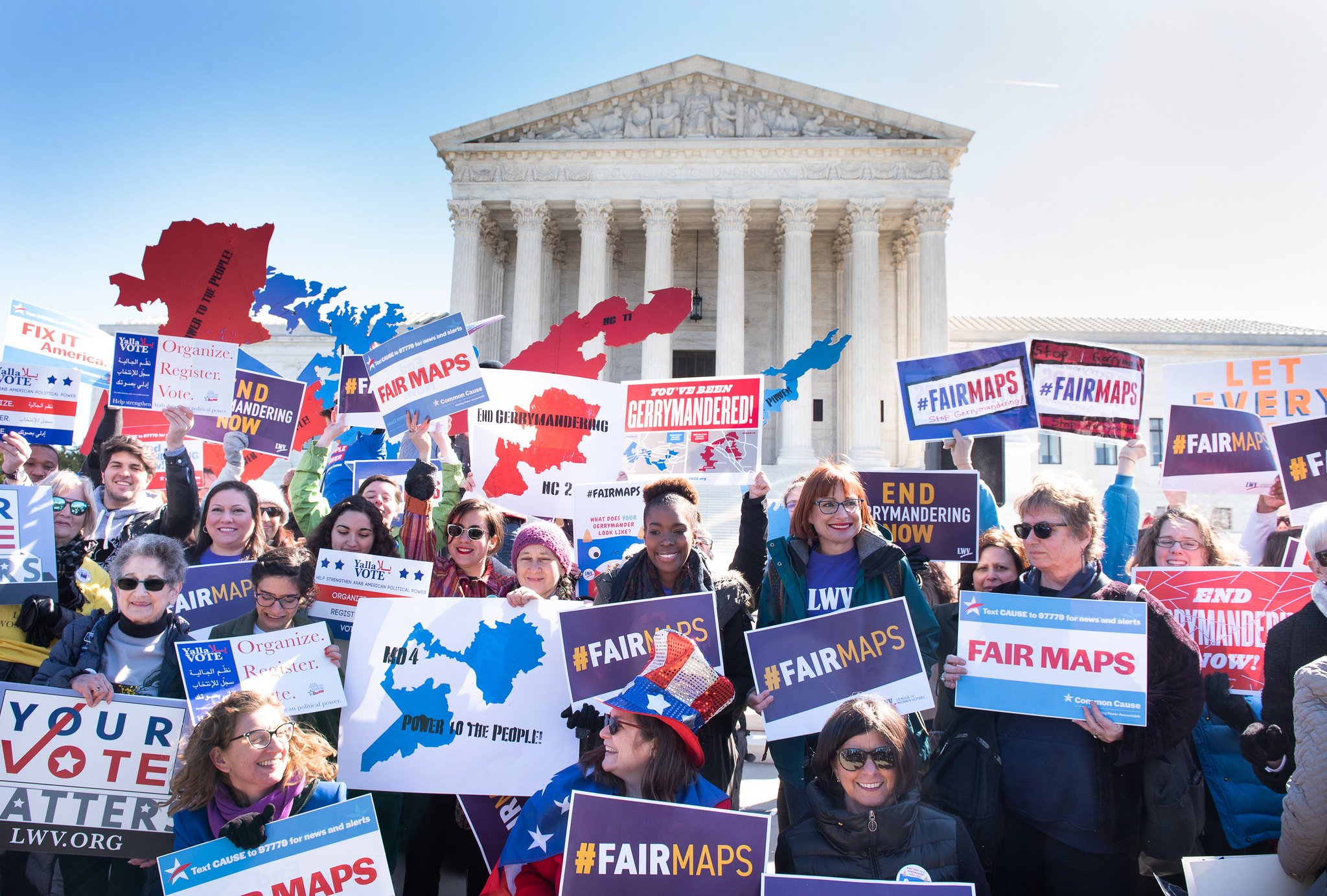
Democracy means voters choose their politicians.
Current New Jersey law lets politicians choose their voters.
Redistricting is the process of redrawing the boundaries of voting districts to account for changes in population. It occurs every ten years after the Census. Drawing district boundaries powerfully influences how our communities are represented in the democratic process. Unfortunately, most states, including New Jersey, put the power to redistrict in the hands of politicians who use the redistricting process to solidify their power.
Legislative Redistricting
In New Jersey, state legislative districts are drawn by an 11 member partisan commission, the New Jersey Apportionment Commission, that is appointed in equal numbers (5 Democrats and 5 Republicans) by the chairs of the state Democratic and Republican committees, with one independent or "tiebreaking" member.
Congressional Redistricting
The New Jersey Redistricting Commission, charged with drawing congressional districts, is also partisan. It consists of 12 members chosen by the Senate President, Assembly Speaker, minority leaders of both houses, and both party chairs, for a total of six members from each party. The 13th independent member serves as Chair of the Commission.
The Problem
Sitting elected officials and party operatives have too much influence over drawing new district lines, undermining the integrity of our democratic processes.
The Solution
A Constitutional amendment to reform New Jersey's legislative redistricting process into one that is more transparent, inclusive, representative and fair.
Why It Matters
Once drawn, our maps determine how we're represented in the government for the next ten years. This means all state and local decisions on health care, jobs, the environment, education, and more rely on fair maps.
Fair Districts New Jersey is committed to ensuring that maps are drawn fairly and accurately, with all voices considered and equitably represented.
Our people-powered movement centers racial equity, nonpartisanship, transparency, and the voices of New Jersey’s diverse communities.
During the 2020 census and redistricting cycle, our coalition was able to work for a more complete census count, increase public input in redistricting, and draw and submit powerful racial equity maps.
Ahead of 2030, we are building community power to ensure New Jersey’s legislative and congressional districts reflect our communities.
Fair District New Jersey Calls For
-
A more independent, representative redistricting commission that minimizes partisanship, reduces the level of political influence over the redistricting process and includes the voices of ordinary citizens with no vested interest in a map's final outcome.
-
Transparency and accountability measures that open up the redistricting process to the public; make data, resources, and drafts of maps publicly available; and require redistricting reports that justify all map-making decisions.
-
A set of clear line-drawing rules ranked in order of priority to guide redistricting commissioners and provide checks against attempts to manipulate boundary lines for political gain.
-
A racial equity provision that reinforces the principles of the Voting Rights Act to protect the voting rights and voting strength of New Jersey’s communities of color.
-
Protections for communities of interest within the redistricting process, which would require ample public hearings and the solicitation of public input across every part of the state.
-
Expansion of the timeline for legislative map creation, allowing for more public input before and after a final draft of a map is presented.


